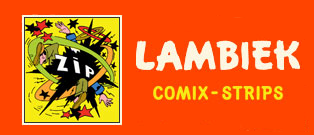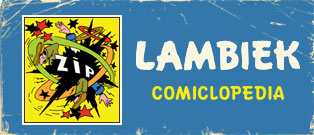Bert Cobb was an early 20th-century U.S. illustrator, caricaturist, painter and cartoonist. He was best-known for his many etchings of winners of dog shows in the 1920s and 1930s. Earlier in his career, he was also a notable illustrator of covers for sheet music collections. As a cartoonist, his most memorable work is 'Ambitious Teddy' (1907-1908), a gag comic gradually evolving into a fantasy series. Cobb also drew shorter-lived series like 'Jocko the Educated Monk' (1901), 'Some Monkey Fun From Jungle Jinks' (1901), 'Stumble-Toe Joe' (1907) and 'Meddlesome Millie' (1911). Because of his portrait cartoons of business and professional celebrities, appearing in about sixty newspapers, he has been nicknamed the "Dean of American Caricaturists".
Early life and career
Albert Andrews Cobb was born in 1869 in Chicago, but raised in Wilmington, Delaware, where he was also educated at a military school. His father and uncle manufactured spring beds and car springs. In the 1880s, Bert Cobb was trained in etching, cartooning, woodcuts and lithography at the Philadelphia Academy of Fine Arts. A decade later, he became a notable illustrator of sheet music for publishers like Edward Taylor Paull and Howley, Davilland & Dressler. Among the musical lyrics Cobb promoted were 'I Couldn't Stand To See My Baby Lose' (Will D. Cobb & Gus Edwards, 1899), 'A Furnished Room to Let' (Tom Daley & Gus Edwards, 1900), 'I Can't Tell Why I Love You But I Do' (Will D. Cobb & Gus Edwards, 1900), 'The Voo-Doo Man' (Williams & Walker, 1900), 'Lam, Lam, Lam' (Ben M. Jerome & Frank Abbott, 1900), 'Just Because She Made Dem Goo-Goo Eyes' (John Queen & Hughey Cannon, 1900), 'A Pipe Dream' (Harry Breen & T. Mayo Geary, 1900), 'Broken Ties' (George Morgan & Ion Arnold, 1901), 'Give Us Just Another Lincoln' (Paul Dresser, 1900), 'Arizona' (Emily Smith, 1912) and 'Since My Margarette Become-A-Da Suffragette' (Will D. Cobb & Gus Edwards, 1913).
Cartooning career
In the 1890s, Cobb made his debut as a political cartoonist in The Kansas City Star. Later that decade, he was present in the Philadelphia Sunday Press with the panel 'Rastus Dewey Inquirer' (4-25 December 1898) and the 'In The Philippines' strip (2 April - 28 May 1899). His comic strips 'Jocko The Educated Monk' (28 April - 26 May 1901) and 'Some Monkey Fun From Jungle Jinks' (25 August - 13 October 1901) were among the early Sunday features distributed by the McClure Syndicate. Since the early 1900s, Cobb was based in New York City, where his caricatures and writings appeared in the Sunday edition of the New York Morning Telegraph. He launched a short-lived comic art and literary periodical called Pen and Ink (1902), to which Palmer Cox also contributed. Cobb's cartoons additionally appeared in magazines like Puck and the New York Globe, before Cobb moved to Boston in 1906. There, he made his appearance as a political cartoonist in the Boston Herald and the Boston Post.
Between 21 April 1907 and 12 January 1908, Cobb drew 'Ambitious Teddy' for the Sunday supplement of The Boston Herald. The comic centers on a young boy who tries a different job in every episode, but then something goes disastrously wrong. As the series went on, Teddy found himself more in fantasy-like settings, reminiscent of Winsor McCay's 'Little Nemo in Slumberland'. On 1 December 1907, the comic was as a result retitled to 'Ambitious Teddy in Mother Gooseland'. A companion piece to 'Ambitious Teddy' was the less inspired and therefore short-lived 'Stumble-Toe Joe'. Between 21 April and 18 August 1907, the lanky boy Stumble-Toe Joe tripped in every gag, usually carrying something fragile to enhance the comedy effect. Another short-lived gag comic was 'Meddlesome Millie', which ran two or three times a week from 3 February up until 3 May 1911. The protagonist was a young girl who simply couldn't leave people and objects alone. Everytime she touched something, or interfered, she caused trouble and damage.
Caricature appearing with an announcement for Bert Cobb's caricature series of the Bayonne Kiwanis Club, published in the Bayonne Evening News and Bayonne Review of 29 August 1923. Is it a self-portrait, or a caricature of Rev. Belvin Maynard, also mentioned in the article?
Caricatures
During the 1910s, Bert Cobb focused on making caricatures of business and professional celebrities, which ran in about sixty newspapers. In the 1910s, Cobb became the official caricaturist and cartoonist of the Republican National Committee, which he remained for eight years. In 1922, the cartoonist was notable for making a portrait series about the "Captains of the Automobile Industry", as well as caricatures of the Bayonne Kiwanis Club, which ran in the Bayonne Evening News and Bayonne Review.
Other artistic activities
On 3 March 1917, the Rochester Democrat and Chronicle reported that Bert Cobb had settled in the city to pursue a career in animated cartoons. He had the desire to set up his own studio with about fifteen employees, but these plans probably fell through. At least one cartoon of a dog, 'Chubby's Capers', was exhibited in Rochester in March, 1917. He eventually returned to New York, where he did artwork for an early rendition of Life Magazine. Cobb was additionally a contributing editor to The American Art Student and The Commercial Artist, a honorary member of the Jersey City Chamber and once executive secretary of the American Art Association. In August 1923, the Bayonne Evening News and Bayonne Review reported that Cobb and fellow cartoonist Walter W. Hubbard were starting a resident art school in New York City through the Association of American Art Students. Based between Riverside Drive and Central Park, their Franco-American Academy of Art taught dry-point etching, illustrating and poster work.
Final years and death
Later in the 1920s, Cobb focused on etchings of winners of dog contests, receiving commissions from all over the United States. Two books, 'Portraits of Dogs' and 'Hunting Dogs', were published in 1931. Until the early 1930s, Cobb's dog art was exhibited all across the country. Bert Cobb died in 1936 in Valhalla, New York, from pneumonia. He was 66 years old.






